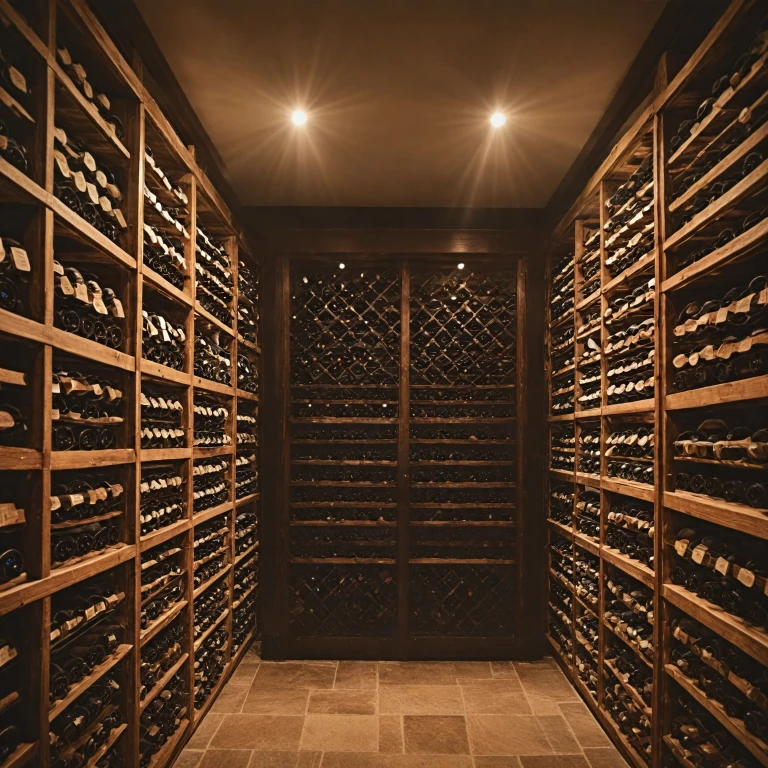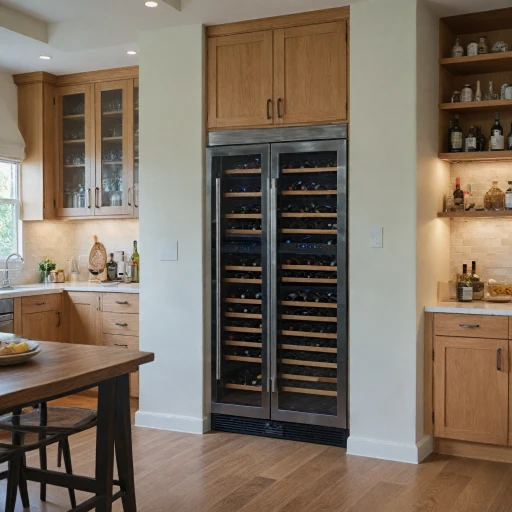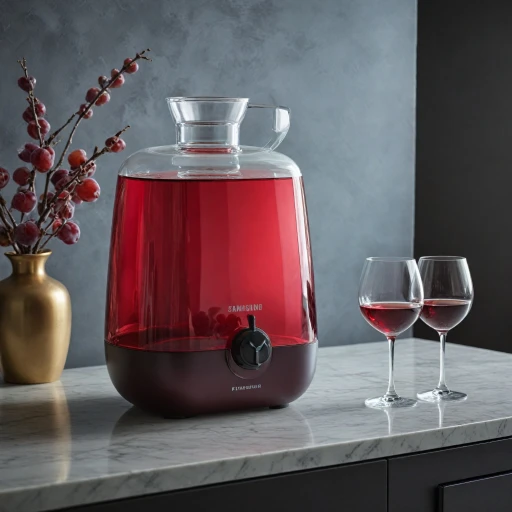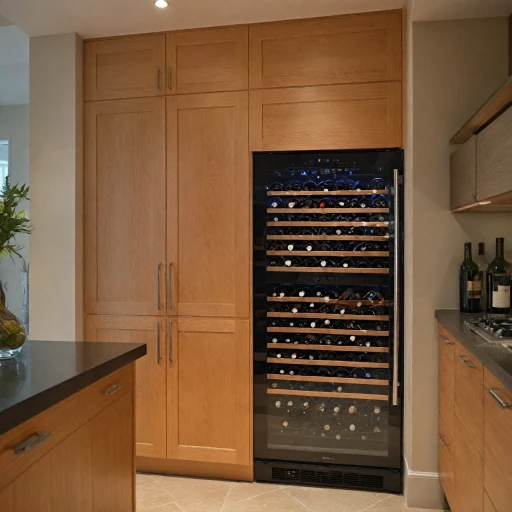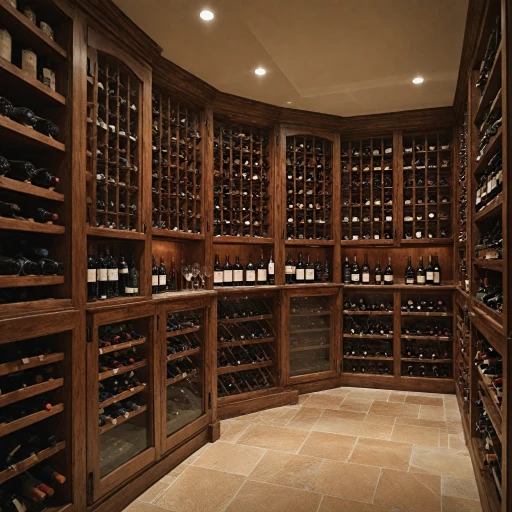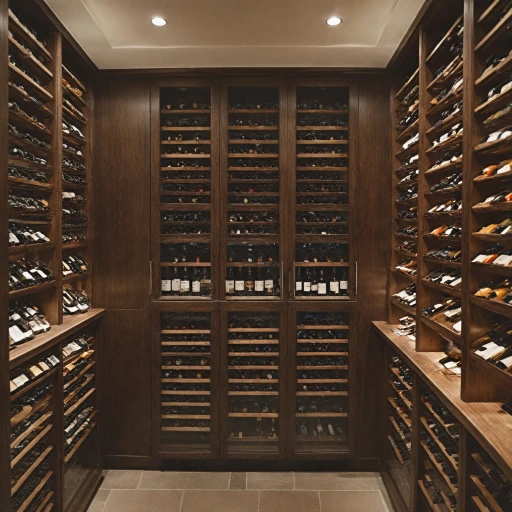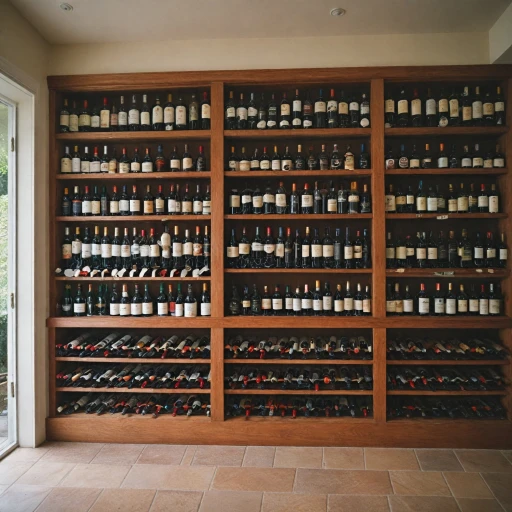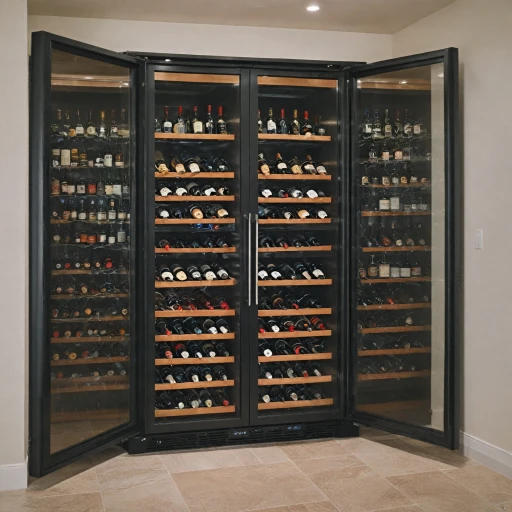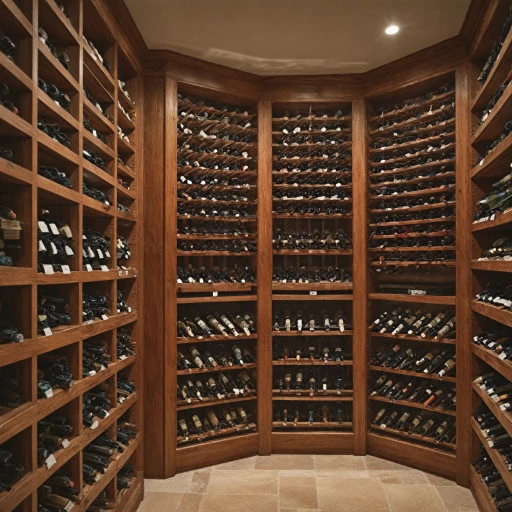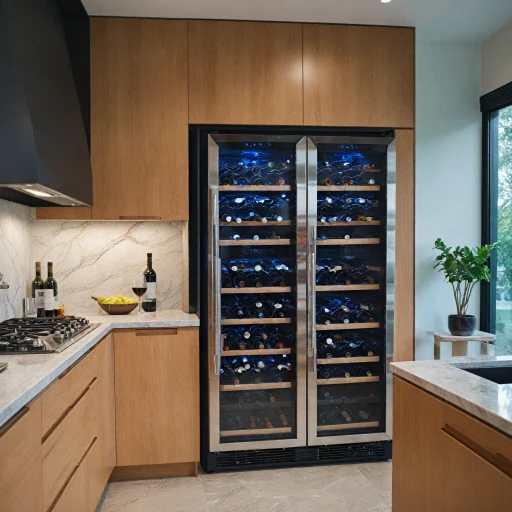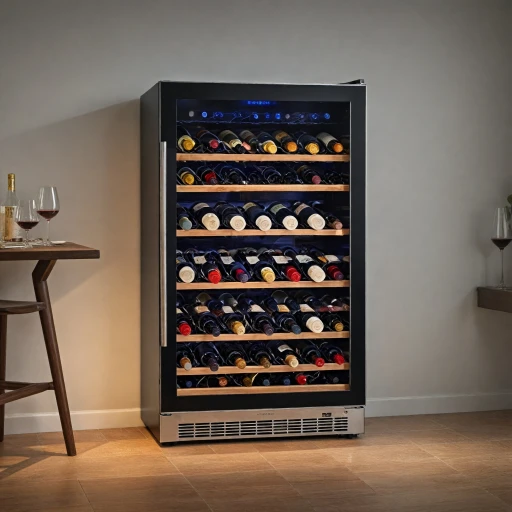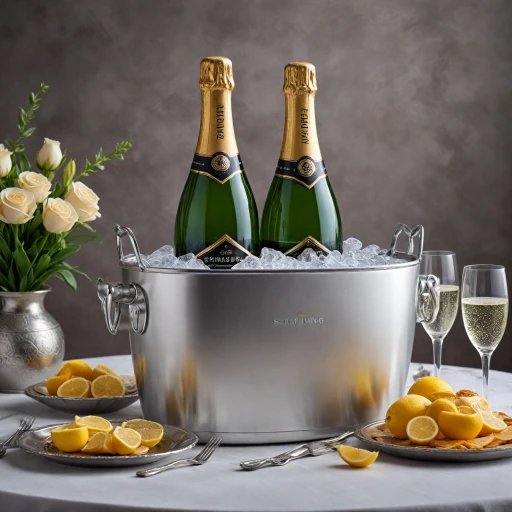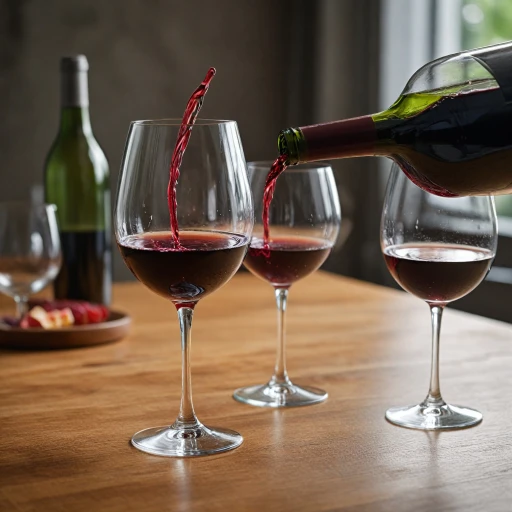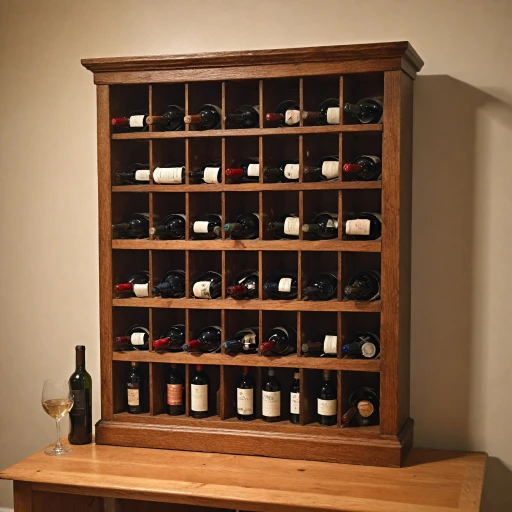
Understanding the Basics of Wine Cellar Cooling
Grasping the Essentials of Wine Cellar Temperature Control
Creating a perfectly balanced environment for wine storage demands a firm understanding of the fundamentals of wine cellar cooling. Unlike regular refrigerators, a dedicated cooling system for wine cellars ensures optimal preservation by maintaining a steady, ideal climate tailored specifically for wines. This entails more than just keeping your wine at a low temperature; it involves understanding how different systems operate and how they fit your specific wine storage needs. At the heart of effective wine preservation is the need to maintain a consistent temperature, which generally hovers around 55 degrees Fahrenheit (13 degrees Celsius). This prevents fluctuations that can result in the wine aging prematurely or becoming spoiled. It's crucial to consider the type of cooling units and systems best suited to your cellar size and design. Systems like ductless splits or fully ducted systems provide flexibility in installation and can accommodate a range of cellar capacities. Ceiling-mounted or wall-mounted units should be chosen depending on your cellar's layout and the space available. Considerations include:- Capacity and Size: Determining the cubic feet of your wine cellar helps in selecting the appropriate system that can efficiently manage the space.
- System Types: Opting between a split system or a packaged unit depends on your cellar setup and budget. Split systems, such as platinum split units, separate the evaporator and condenser, offering quieter operation and less visible equipment.
- Ducted vs. Ductless: Fully ducted systems can provide a concealed cooling solution, whereas ductless split systems offer an easier installation with reduced structural alterations.
Choosing the Right Cooling System for Your Wine Cellar
Key Considerations When Choosing Your Wine Cellar Cooling System
Selecting the right cooling system can be as crucial as choosing the perfect bottle of wine. It requires careful thought regarding the unique needs of your wine cellar.There are several types of wine cellar cooling units to consider. Here's a breakdown to guide your decision:
- Self-contained Cooling Units: These are all-in-one systems ideal for smaller wine cellars and can be cost-effective, though they may have limitations in cooling larger spaces.
- Split Systems: Comprising two main components, these units offer flexibility. The evaporator unit installs inside the cellar while the compressor can be positioned elsewhere, such as in an adjacent room or outside, minimizing noise and vibration.
- Ducted Cooling Systems: Offering virtually silent operation, these systems work behind the scenes, as the units are entirely located away from the cellar. This design requires sufficient space for duct installation.
- Ceiling Mount Units: Ideal for maximizing wine rack space, these units blend seamlessly into the cellar’s design but might be challenging to install depending on the existing ceiling construction.
Capacity is crucial. Assess how many bottles you plan to house and calculate based on cubic feet. Ensure the system maintains a steady temperature, typically between 45°F and 65°F, which is vital for preserving wine quality.
Price can vary significantly depending on the system's sophistication and brand, such as Wine Guardian's offerings. Consider not only the initial cost but also long-term maintenance needs, which can impact overall expenditure.
Finally, review the system's energy efficiency features. Some modern units come with advanced technology to minimize power use, aligning with sustainable practices without compromising performance.
By understanding these factors and clearly identifying your needs, you can select a cooling system that not only fits your budget but also ensures your collection is safeguarded for years to come.
Installation Tips for Wine Cellar Cooling Systems
Installation Guidance for Optimal Performance
Embarking on the installation of a wine cellar cooling system can seem daunting, but with a clear understanding of the basics and the right approach, it can be smoothly executed. It's crucial to choose the appropriate cooling units for your cellar's size, layout, and location. Here's a practical guide to setting up your system effectively:
- Evaluate Space and Design: Consider the dimensions of your wine cellar and its structure—are the wine racks wall mounted, or do they allow for ceiling mounts? Knowing the cubic footage helps in selecting a unit that meets the cooling capacity needs.
- Unit Selection: Depending on your budget and design preferences, you can opt for split systems, self-contained, or fully ducted systems. For example, a ductless split system offers installation flexibility and quiet operation, while a ceiling mount unit saves valuable floor space.
- Position for Efficiency: Proper placement of your cooling system is essential to maintain a consistent temperature. Avoid positioning the unit in direct sunlight or areas with high traffic, as these can affect the unit's efficiency.
- Ensure Proper Ventilation: Whether it's a ducted system or a self-contained unit, ensuring that your cooling unit has adequate ventilation is crucial. This prevents the system from overheating and ensures optimal performance.
- Professional Installation: For more complex systems like a platinum split or wine guardian series, hiring a professional is advised to ensure that the installation complies with local building codes and is completed without affecting the structural integrity of your wine cellars.
With these tips in mind, setting up your wine cooler and creating a perfect environment for your collection is not only attainable but will also enhance the longevity of your wines. For more in-depth guidance on selecting the right system, consider reviewing our article on cooling unit essentials.
Maintaining Your Wine Cellar Cooling System
Regular Maintenance for Optimal Performance
Maintaining your wine cellar cooling system is crucial for ensuring that your wine collection remains at the ideal temperature. Regular maintenance not only extends the lifespan of your cooling unit but also ensures it operates efficiently. Here are some key maintenance tips:
- Check the Filters: Filters in your cooling systems, whether they are ducted or split systems, need regular cleaning or replacement. This prevents dust and debris from affecting the system's performance.
- Inspect the Coils: The evaporator and condenser coils should be checked for dust buildup. Clean coils ensure efficient heat exchange, which is vital for maintaining the right temperature in your wine cellar.
- Monitor the Temperature: Regularly check the temperature settings and ensure the cooling unit maintains a consistent environment. Fluctuations can affect the quality of your wine.
- Check for Leaks: Inspect the cooling unit for any signs of refrigerant leaks. A leak can lead to inefficient cooling and increased energy consumption.
- Professional Servicing: Schedule regular professional servicing for your cooling system. A professional can identify potential issues that might not be visible to the untrained eye.
Understanding the Role of Different Systems
Different cooling systems, such as the Wine Guardian series or fully ducted systems, have specific maintenance needs. For instance, a ceiling mount unit might require different care compared to a ductless split system. Understanding these differences is key to effective maintenance.
Moreover, the capacity of your cooling unit, measured in cubic feet, determines the frequency of maintenance. Larger units might require more frequent checks to ensure they are functioning correctly.
Maintaining Wine Racks and Storage
While focusing on the cooling system, don't overlook the importance of maintaining your wine racks and storage areas. Ensure that wine racks are stable and free from mold or mildew, which can affect the quality of your wine. Proper maintenance of both the cooling unit and storage area ensures your wine collection is preserved in optimal conditions.
Energy Efficiency in Wine Cellar Cooling
Boosting Energy Efficiency in Your Wine Cellar Cooling
To maintain optimal conditions for wine storage while keeping costs in check, energy efficiency is paramount. Wine cellars require consistent temperatures and humidity levels, which can be energy-intensive. Here's how to ensure your cooling system is both effective and efficient:- Select the Right System: Ensuring your cooling system matches your cellar's specific needs in terms of size and configuration can prevent unnecessary energy expenditure. Options include split systems, fully ducted units, and more, each with their own efficiency ratings.
- Consider Placement: The location of the cooling unit, whether a ceiling mount, wall, or in the racks, can significantly affect its efficiency. Improper placement may require the system to work harder, thus consuming more energy.
- Insulation is Key: Proper insulation of your wine cellar supports temperature consistency and reduces the load on your cooling system. Regularly check for any gaps or areas where energy might be escaping.
- Regular Maintenance: Routine checks and maintenance can keep cooling systems running at peak efficiency. This involves cleaning filters, checking for leaks, and ensuring connections and components are intact.
- System Features: Look for systems with energy-efficient features. Some units offer variable-speed compressors or environmentally friendly refrigerants that can enhance performance without a spike in energy use.
- Monitoring and Adjustments: Utilize a smart thermostat to monitor the temperature and adjust settings as needed to avoid over-conditioning.
- Consider a Wine Guardian: For those seeking premium options, a wine guardian system can offer advanced features that may improve efficiency and control over your wine environment.
Common Mistakes in Wine Cellar Cooling and How to Avoid Them
Avoiding Mistakes in Setting Up Wine Cellar Cooling
When it comes to setting up a wine cooling system, many common errors can affect the efficiency and functionality of your wine cellar. It's important to understand these pitfalls, as they can disrupt the delicate balance needed to preserve your treasured collection effectively.
Ignoring Wine Cellar Size and Capacity
One of the most frequent mistakes is neglecting to consider the cubic feet when selecting your wine cellar cooling unit. The unit should match the capacity of your cellar to maintain the right temperature. Using a cooling system that is too small or too large can lead to improper climate control, which might spoil the wines.
Incorrect Wine Cooling Unit Placement
Improper placement of the cooling unit can also pose challenges. Whether you choose a ceiling mount, wall mounted, or ductless split system, it's crucial that the unit allows for efficient air circulation. Placing the unit near wine racks or other obstructions can prevent it from functioning optimally.
Overlooking Ventilation Needs
Ventilation is another key aspect often overlooked. Every cooling system, whether it's a contained wine cooling unit or a split system, requires adequate ventilation. Poor ventilation can cause the unit to work harder than necessary, reducing its lifespan and increasing energy consumption.
Underestimating Energy Efficiency
The energy efficiency of your cooling system can have a significant impact on operational costs. Opting for an energy-efficient model, such as a ducted system or a wine guardian series, can save money in the long run and is better for the environment, without compromising on performance.
Neglecting Maintenance
Lastly, neglecting regular maintenance is a common oversight. To ensure longevity and reliability of your cooling units, routine checks and cleaning are necessary. Regular maintenance can prevent breakdowns and sustain the performance of your wine storage system.
Avoiding these common mistakes enhances the efficiency of your wine cellar and ensures that your collection is preserved in optimum condition. Choose wisely and maintain your wine cooler to enjoy your collection for years to come.
